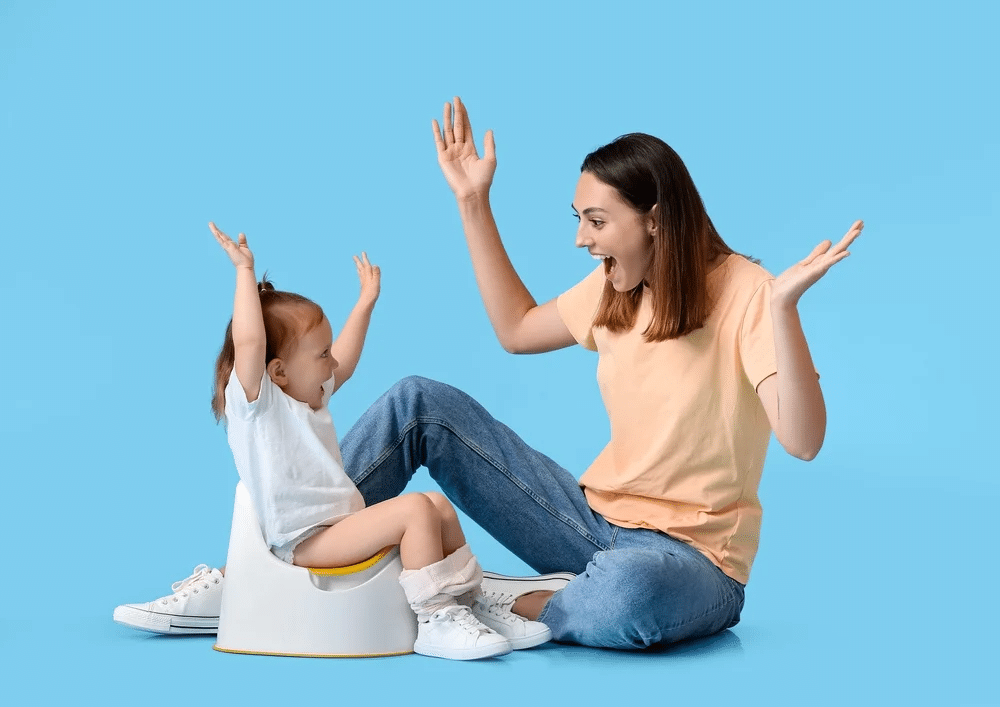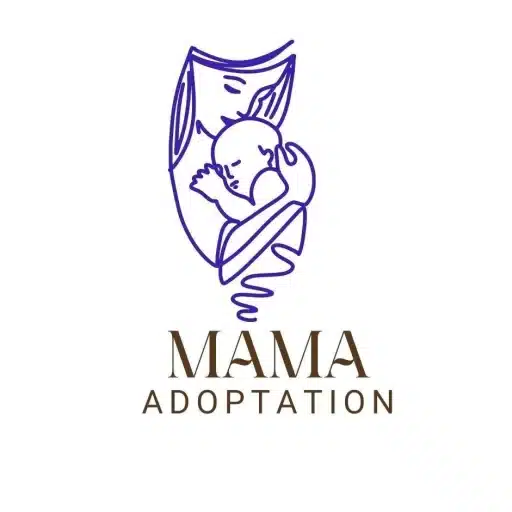Potty training is a significant milestone in a child’s development, and when it comes to potty training in girls, the process can be both exciting and challenging.
- Is Your Daughter Ready for Potty Training?
- What is The Best Age To Potty Train Your Girl?
- How Long Does It Take To Potty Train a Girl?
- How do you potty train a stubborn toddler girl?
- Preparing for potty training
- How to teach a girl to wipe front to back
- Tips for Potty Training Girls
- Potty Training Girls: What works and what does’t work?
- Conclusion:
- FAQ’s
Parenting and caregivers will find this guide invaluable as they navigate the potty training process with their daughters. During potty training, it is important to recognize readiness cues, determine the ideal age, and teach proper hygiene and deal with stubbornness.
Potty training or toilet training is a process to set a toddler free from diapers and introduce them to the toilet and teach them how to use it for pee and defecation.
You’ll find valuable information and guidance to assist your little girl in making the confident and independent transition from diapers to potty training, whether you’re a first-time parent or experienced parent.
Read Also: My Toddler Poop Smells Like Mothballs: Why It Happens & What To Do
Is Your Daughter Ready for Potty Training?
Before diving into potty training for girls, it’s essential to figure out whether your girl is ready for it or not. The American Academy of Pediatrics (AAP) suggests not to push for potty training and look for signs of readiness, such as showing interest in the toilet, staying dry for longer periods, or expressing discomfort with dirty diapers. Remember, there’s no need to rush; every child is unique.
What is The Best Age To Potty Train Your Girl?
The best age to start potty training for your girl can vary from child to child, while on average girls usually show signs of readiness for potty training between the ages of 2 and 3. You will find out on your own that she is ready for potty training as soon as you see signs of readiness like these:
- When she watches you go potty, she shows general interest in it
- She stays dry for an hour or two before peeing again
- She complains that her diaper is dirty or wet
- She’s hiding when pooping
- She’s telling you when she has to go potty
- She’s pulling her pants up and down.
How Long Does It Take To Potty Train a Girl?
Every child is unique, so there is no one-size-fits-all answer to this question. Girls usually take more time for potty training. In general, the estimated time to train your girl for potty training is 3-6 months.Potty training for napping or resting at night is often considerably more difficult. Some youngsters may have accidents during naps or when sleeping until they are 5 years old. (Maybe longer if they’re experiencing trouble controlling their bladders or sleeping deeply.)
What’s the best way to potty train a girl?
There’s no single best way of potty training a girl just because every child is different, so different approaches will work for different girls.
See what works for your daughter , afterall you know your daughter like no one else.
Read Also: How to prevent diaper blowouts (Parent Guide)
How do you potty train a stubborn toddler girl?
Potty training a stubborn toddler, whether a girl or a boy, can be challenging, but with patience and a consistent approach, you can help them make progress.
- Allow your child to be as independent as possible in the process. Let them flush the toilet, wash their hands, and pull down their pants. Encouraging independence can make them feel more in control.
- Make sure your toilet area is well lit, and place some toys nearby to create a friendly environment for them.
- Do not force them.
- Speak gently and follow the same ways that you have used earlier, like stopping them from going upstairs, eating mud, etc.
Why Do Potty Training Differs in Girls?
Potty training can differ for girls compared to boys due to a combination of factors, including biological, developmental, and social aspects. Here are some key reasons why potty training may vary between girls and boys:
- Physical Differences: While both boys and girls have similar basic physiological processes involved in potty training, there are anatomical differences. Girls sit on the potty while boys stand, which can influence the mechanics and techniques involved.
- Developmental Timing: Girls and boys may reach certain developmental milestones at slightly different ages. Girls often tend to show signs of readiness for potty training a little earlier than boys. This can influence when parents begin the potty training process.
- Parenting Styles: Parents’ attitudes and parenting styles can also impact the potty training process. Some parents may have different expectations or approaches for girls and boys, which can affect the timing and methods used.
- Sibling Influence: If there are older siblings of a different gender, their experiences and influence can impact the potty training process for a younger child. Girls may observe their brothers or sisters using the toilet and show interest in potty training earlier.
- Parent-Child Bond: The parent-child bond and communication style can influence how effectively parents and children work together during potty training.
Preparing for potty training
Preparing for potty training is an essential step in making the process smoother and more successful. Here’s what you can do to get ready for potty training:
- Gather Supplies: Acquire the necessary supplies, such as a child-sized potty chair or a toilet seat reducer for the regular toilet. Let your child be involved in choosing the potty to make it more appealing.
- Talk About It: Begin discussing the concept of using the potty with your child. Use simple language to explain its purpose and encourage questions. Reading potty training books or watching videos together can also help.
- Buy Training Pants: Transition from diapers to training pants or underwear during the day. Let your child pick out fun or colorful underwear to make it exciting.
- Set Up a Potty Area: Create a comfortable and child-friendly potty area in the bathroom, with easy access to the potty chair or toilet.
- Practice Handwashing: Teach your child proper handwashing after using the potty to instill good hygiene habits.
- Consult with Caregivers: If your child is under the care of others, such as at daycare, ensure they are on the same page and follow the same potty training routine.
How to teach a girl to wipe front to back
Teaching a girl to wipe front to back is an important part of teaching proper hygiene and preventing potential infections. As a mother of 2 and pediatrics too,I am mentioning some key points you should follow to teach your girl this wiping thing.
- Use simple language: Always use simple language and your toe should be soft so that kid might better understand your point. Example: My dear, it’s so important to remember to wipe from front to back to keep those nasty germs away. I care about your health and want to make sure you’re safe and well. So, always remember, front to back.
- Demonstrate Proper Technique: Show your child how to wipe correctly. You can use a doll or a soft toy to demonstrate the motion. Emphasize wiping from the front (near the urethra) to the back (toward the anus).
- Supervise and Guide: Initially, when your child is learning, it’s essential to supervise and guide them during each bathroom visit. Provide verbal instructions as they practice the technique.
- Give them company: Do not leave them alone in the toilet. Always give them company support and make comfortzone.
- Use Visual Aids: Some children respond well to visual aids. You can find child-friendly books or posters that illustrate proper wiping techniques and make them watch it on youtube as well.
Tips for Potty Training Girls
1. Be Patient:
Potty training can be frustrating, but remember to be patient and understanding. Your support means the world to her. Do not make this potty training a hard battle for her. If you try to rush in things it puts pressure on your girl. Make a friendly environment so that she can learn faster.
2. Start Early
Start early as soon as you notice that your baby girl is ready for this. When she starts to show signs of readiness and is able to tell you she needs to go to the bathroom, then this is the right time. If you start early she will surely learn early. Practice with placing toys on the potty to make a visual in her mind.
3. Let your daughter go without clothes
Let your daughter go without clothes in the early days of potty training. It is easy for her to approach the toilet and your laundry mess will be lessened.
4. Purchase a potty chair
Before starting potty training, its best to invest in a potty chair of your girl’s liking. Toddlers find it difficult to climb on the toilet and its size is inappropriate for them. Bring your baby girl to shop and purchase a potty chair, it will give them a sense of independence to choose and use whenever they need to.
5. Teach Proper Wiping
Teach proper wiping technique to your girl. Tell her the importance of hygiene. Use facial expressions to tell them either something is good or not. Teach her to avoid wiping from back to front because feces can come in contact with the vaginal portion.
6. Teach her how to sit properly
Teach her how to sit properly when you are starting potty training. There are two common ways to sit properly on a toilet. Choose the one which is either convenient for your girl or she is comfortable in this.
- Sit straight back touching the toilet and legs should be wide apart,in this case you have to remove the trousers of your girl.
- Sit on the toilet and then tilt forward so that the pressure of pee is downward.
It is important to teach them how to sit properly because if she is not sitting in a correct way then her pee will spread on the toilet and clothes too.
7. Celebrate triumphs
When your kid goes to pee or poop in a potty, celebrate this triumph. Cherish them, sing songs or make joyous dances in this act. Give them rewards or little treats to encourage them so that they try to do this again and again.
8. Practice up and down
Practicing “up and down” in potty training your girl refers to teaching her how to independently pull down her underwear or pants when she needs to use the potty and then pull them back up afterward. This skill helps foster her independence and self-care abilities. To encourage this, it’s essential to demonstrate the process, use easy-to-manage clothing, and provide positive reinforcement when she successfully accomplishes it. Consistent practice and patience are key as she develops this skill, which will become an integral part of her potty training and overall self-sufficiency in dressing and using the toilet.
9. Set up a potty training schedule
A potty training schedule for girls involves establishing a structured routine based on their readiness. Begin with a morning potty trip and maintain regular intervals, including before and after meals. Watch for cues, use timers, and transition to underwear during the day. Celebrate successes and remain calm about accidents. Nighttime training might take more time. Communication, flexibility, and consistency are vital for a successful potty training schedule tailored to the child’s unique needs and progress.
10. Let your girl pick out big girl underwear
Let your girl pick out big underwear or any other while shopping. Set them free to choose their stuff for potty training .
11. Stay calm
Accidents are part of the process. Stay calm and reassure your child that it’s okay. Avoid scolding or showing disappointment.
12. Listen to what she is telling you
Always listen to whatever she is telling you. Some kids get irritated or become stubborn if their parents doesnt listen to them carefully.
Potty Training Girls: What works and what does’t work?
Potty training girls can be a unique journey for each child, and what works or doesn’t work can vary. However, some general strategies tend to be effective, while others may be less successful.
What Works:
There are some key factors which tend to work are readiness and beginning when she’s prepared, offering positive reinforcement for successful potty use, establishing a consistent potty schedule, encouraging independence, and creating a comfortable potty environment.
What Doesn’t Work:
1. Pressuring or Punishing
2. Starting Too Early
3. Inconsistency
4. Negative Language
5. Comparisons
Remember, potty training is a unique journey for each child. What works best depends on her readiness, temperament, and comfort level. It’s important to stay patient, provide a positive and supportive environment, and be open to adapting your approach based on your child’s needs.
Conclusion:
In summary, potty training girls is a significant milestone, requiring a customized approach based on their readiness signs. Typically starting between the ages of 2 and 3, the process may take 3 to 6 months, with nighttime training often taking longer. An understanding of the differences between girls and boys in potty training, coupled with teaching proper hygiene practices, setting a schedule, and maintaining patience, is essential. Ultimately, potty training is a unique journey for each child, and while it may present challenges, it also brings rewarding moments and fosters independence and hygiene habits.
FAQ’s
Q1: What are some common challenges I might face when potty training my daughter?
Common challenges can include resistance, accidents, nighttime training, and maintaining consistency. Patience and a positive approach can help overcome these challenges.
Q2: Should I use a child-sized potty chair or a regular toilet with a seat reducer for potty training my daughter?
The choice between a potty chair and a seat reducer depends on your child’s comfort and preference. Let your daughter participate in the decision to make it more appealing for her.
Q3: How can I encourage my daughter to let me know when she needs to use the potty?
Encouraging open communication is key. Be attentive to her cues, ask if she needs to go, and create a safe and supportive environment where she feels comfortable expressing her needs.
Q4: Are there any signs that my daughter might not be ready for potty training yet?
Signs that your daughter might not be ready include resistance to the potty, being unable to stay dry for any length of time, or showing no interest in the toilet. It’s important not to rush if these signs are present.
Q5: What should I do if my daughter regresses in her potty training progress?**
Regression is not uncommon. If your daughter regresses, maintain patience, and revisit the basics of potty training. Offer positive reinforcement and reassure her as she regains her confidence.
Q6: How can I prepare for nighttime potty training with my daughter?
Preparing for nighttime training involves using protective measures like mattress covers. Limit drinks before bedtime and encourage your daughter to use the potty before sleep. Be patient as nighttime dryness can take longer to achieve.
Q7: How do I handle public restrooms and potty training my daughter outside of the home?
When using public restrooms, carry a portable potty seat reducer or disposable seat covers for hygiene. Encourage your daughter to use public restrooms as needed while reassuring her about the change in surroundings.
Q8: How can I address potty training if my daughter is in daycare or with a caregiver during the day?
Ensure that daycare providers or caregivers are informed about your potty training routine. Maintain consistency between home and the daycare setting to support your daughter’s progress.
Q9: Are there any specific techniques to address nighttime bedwetting during potty training for girls?
Addressing bedwetting may involve limiting drinks before bedtime and ensuring your daughter uses the potty before sleep. Be patient, and consider using protective bedding to minimize disruptions from nighttime accidents.
Read Also: Helpful Tips Older Kids in Diapers








